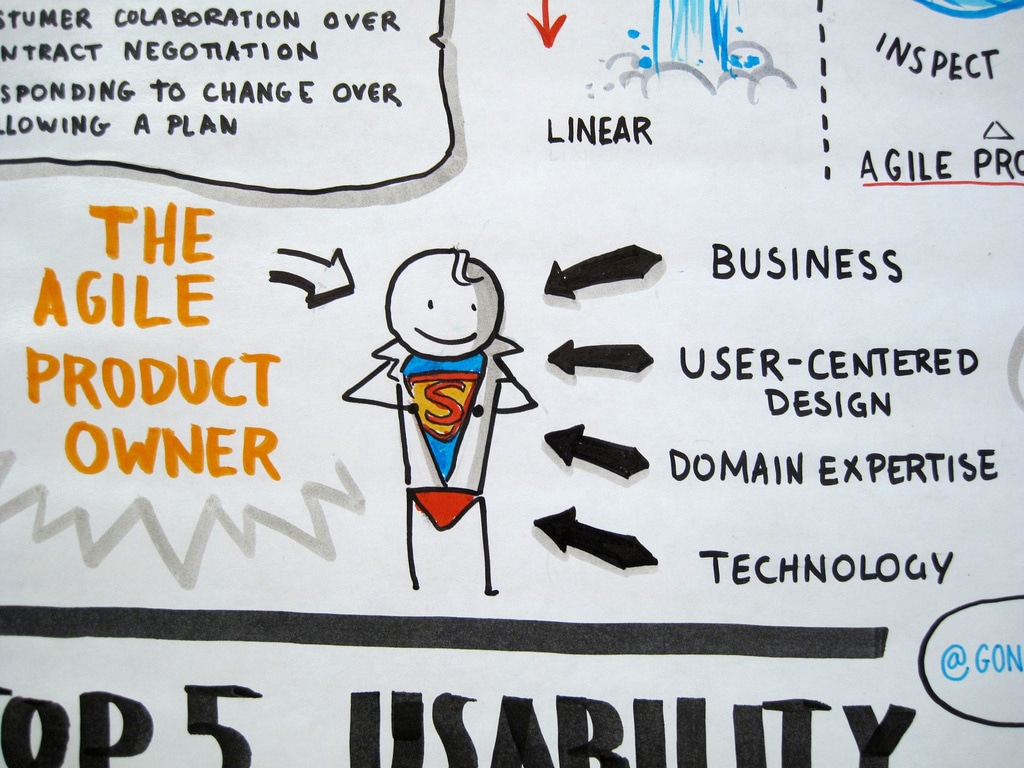Challenges Faced by Startups and the Relevance of RACI Model

Estimated reading time: 11 minutes
Startups often face unique challenges, such as limited resources, undefined roles, and rapidly changing priorities. Navigating these complexities requires clarity and structure. The RACI Model, a responsibility assignment matrix, can be a valuable tool for startups.
By defining four key roles (Responsible, Accountable, Consulted, and Informed), the RACI Model helps prevent role confusion, streamline decision-making, and enhance communication within the team.
Table of contents
- Understanding the RACI Model
- RACI Definition and Explanation
- How RACI Works in a Team or Project Setting
- The Importance of Role Clarity in Startups
- Implementing the RACI Model in a Startup Environment
- Step-by-step Guide on Creating a RACI Chart
- Tips for Effective Implementation
- Common Pitfalls to Avoid During Implementation
- Common Challenges and Solutions when Implementing RACI
- Integrating RACI with other Project Management Tools
- Integrating RACI with Other Project Management Methodologies
- Leantime Features for Startups and Project Management
- Unlock Your Startup’s Potential
Understanding the RACI Model
In the realm of startups, this model plays a significant role in project management and team dynamics. This model is an acronym representing the four key roles within a project: Responsible, Accountable, Consulted, and Informed.
Defining these roles and their responsibilities can help project managers and startups address common issues like role overlap and confusion about project tasks.
RACI Definition and Explanation
The RACI model is a framework that categorizes team roles into four distinct functions, each critical to the effective management and execution of any project. These roles guarantee that every aspect of the project is assigned, helping project managers and teams work more efficiently and transparently.
Responsible
This role is assigned to the team members who are actively involved in performing a project element’s specific tasks and activities. They are the doers and the primary executors whose hands-on efforts bring the project to life. Their role involves a deep engagement with the task at hand, from initial implementation to the final output.
Accountable
Often, a senior team member or a project manager holds the ultimate authority and responsibility for the completion and success of the project element. They are the ones who sign off on work or decisions made by those responsible.
This role involves a high level of oversight, providing that the tasks align with the project’s goals and quality standards. They are also the point of contact for any escalations and are expected to resolve issues that arise during the project lifecycle.
Consulted
These are the subject matter experts or experienced individuals who provide guidance, advice, and feedback to the responsible team members. Their input is critical in shaping the direction and execution of tasks.
This collaborative role involves two-way communication, where the consulted party offers expertise, insights, and advice to ensure the project aligns with best practices and benefits from their specialized knowledge.
Informed
This group comprises stakeholders and other relevant parties who must be informed about project progress, decisions, and outcomes. While they do not participate directly in the task execution or decision-making, their awareness of the project’s status is crucial.
This could include team members from other departments, leadership, or external stakeholders. The informed party typically receives regular updates and reports, ensuring transparency and keeping everyone aligned with the project’s progress.

How RACI Works in a Team or Project Setting
By clearly defining roles and responsibilities within a project, it can bring clarity and structure to startups and small businesses. This model helps to ensure that each team member understands their role and what is expected of them, leading to better communication, decision-making, and overall project success.
The Importance of Role Clarity in Startups
Startups often face unique challenges when it comes to team dynamics and project management, including role overlap and confusion. This lack of clarity can lead to inefficiencies, miscommunication, and even project failure. Implementing it in a startup environment can help address these issues by:
- Clarifying each team member’s role and responsibilities in the project, reducing confusion and promoting accountability.
- Streamlining communication by ensuring that all stakeholders are kept in the loop and consulted as needed.
- Facilitating decision-making by clearly establishing who has the authority to make final decisions on complex project tasks and deliverables.
By embracing it, startups can improve project team dynamics, communication, project progress, project scope, and overall project success.
Implementing the RACI Model in a Startup Environment
As startups encounter unique challenges, adopting a structured role assignment approach can be crucial in bringing clarity and organization to their operations.
Below, we will provide a step-by-step guide on how to implement RACI in a startup, along with tips for effective implementation and common pitfalls to avoid.
Step-by-step Guide on Creating a RACI Chart
Discover our comprehensive step-by-step guide on establishing clear roles and responsibilities within a startup environment for enhanced the project team efficiency.
- Identify all tasks, milestones, and deliverables in your project. Break down the project into its smallest components to ensure every aspect is covered.
- List all team members and stakeholders who will be involved in the project. This includes employees, managers, consultants, and even clients.
- Create a RACI matrix with tasks on the vertical axis and stakeholders on the horizontal axis. You can use a simple spreadsheet or a project management software like Leantime to create the matrix.
- Assign the RACI roles (Responsible, Accountable, Consulted, Informed) for each task and stakeholder. Ensure that each task has at least one responsible and one accountable person and that everyone has a role in the project.
- Communicate the RACI matrix to all stakeholders and ensure everyone understands their roles and responsibilities.
- Regularly review and update the RACI matrix as the project progresses and roles evolve. This ensures continued clarity and alignment throughout the project.
Tips for Effective Implementation
For a successful adoption of the RACI framework in your project management, a detailed and strategic approach is essential. Consider these enhanced tips to maximize the effectiveness of RACI implementation:
Inclusive Stakeholder Engagement in Developing the RACI Matrix
Actively involve every stakeholder in the process of crafting the RACI matrix. This includes the project team and any external partners or key individuals who have a stake in the project.
By engaging all parties from the outset, you promote a sense of ownership and commitment to the matrix. It also helps ensure that everyone clearly understands their roles and the roles of others, facilitating better collaboration and reducing the potential for conflict.
Clarity and Precision in Defining Roles and Responsibilities
When assigning roles, be explicit and specific. Clearly articulate each role’s tasks and responsibilities, avoiding vague or generic descriptions.
This precision helps prevent misunderstandings and ensures that every team member knows exactly what is expected of them. Use clear, straightforward language and, where possible, include specific examples or scenarios to illustrate the roles.
Dynamic and Regular Updates to the RACI Matrix
Recognize that project scopes and team dynamics are fluid and can change over time. Regularly revisit and revise the RACI matrix to reflect these changes.
This could be in response to shifts in project direction, team member roles, or the introduction of new tasks or phases in the project. Regular updates ensure it remains relevant and effective throughout the project lifecycle.
Fostering Open and Ongoing Communication
Encourage and facilitate continuous communication among all team members. This should include formal channels, like regular meetings or progress reports, and informal ones, like open-door policies or collaborative platforms.
Open communication ensures that questions, concerns, or suggestions regarding individual roles, responsibilities, or the broader project can be addressed promptly and effectively. It also helps build a cooperative team environment where everyone feels comfortable discussing the RACI matrix and their part in the project.
Common Pitfalls to Avoid During Implementation
When implementing the RACI Matrix, be aware of the following common pitfalls:
Avoiding the Trap of Multiple Accountable Individuals for a Single Task
Designate a single individual accountable for each task to prevent confusion and ensure clear ownership. Having more than one person accountable can lead to a diffusion of responsibility, where tasks may fall through the cracks as each accountable individual assumes the other is taking charge. A singular point of accountability secures decisiveness and clarity in decision-making.
Preventing Overburdening of Team Members
Distribute responsibilities evenly and thoughtfully among team members to avoid overwhelming any single individual. Overloading someone with too many tasks can lead to burnout, reduced efficiency, and a decline in the quality of work.
Regular check-ins and workload assessments can help identify and alleviate excessive burdens on team members, thereby maintaining a balanced and productive team dynamic.
Ensuring Comprehensive Communication of the RACI Matrix
Proactively share and explain the RACI matrix with all stakeholders, including those who might not be directly involved in everyday tasks. This step is critical to avoid misunderstandings and ensure that everyone’s expectations are aligned.
Effective communication of the matrix involves not just an initial briefing but also ongoing discussions and clarifications as needed throughout the project’s duration.
Maintaining an Updated RACI Matrix
Regularly review and update the RACI matrix to reflect the evolving nature of the project. Changes in team composition, project scope, or individual roles can render an outdated RACI matrix ineffective.
Keeping the matrix current ensures that it remains a reliable and valuable tool, providing clear guidance on roles and responsibilities at every project stage.
Benefits of Using the RACI Model for Startups
Startups often face challenges such as role overlap, confusion, and the need for efficient communication. It can bring clarity and structure to these startups, improving their efficiency, communication, and decision-making processes.
This model positively impacts team dynamics and project phases, helping startups grow and succeed.
Improving Efficiency, Communication, and Decision Making
The model clearly defines the roles and responsibilities of the project manager and each team member, streamlining the delegation of tasks and ensuring that everyone knows their part in the project. This clarity in roles can lead to better communication among project team members and smoother decision-making processes.
Assigning each team member specific project roles and tasks also helps to prevent duplication of efforts and ensures that resources are used efficiently. This can contribute to faster project completion and better overall results for project teams and the startup.
Impact on Team Dynamics
When team members clearly understand their roles and responsibilities in complex projects, the project manager and employees are more likely to collaborate effectively and work harmoniously. This positive team dynamic can lead to higher morale and job satisfaction, improving the startup’s overall performance of future project work.
Furthermore, the RACI Model’s structured approach helps startups identify potential bottlenecks in project plans and address them proactively. It encourages accountability, ensuring that each team member takes ownership of their tasks and works towards the project and the entire team’s overall success.
It provides valuable solutions for startups seeking to improve their efficiency, communication, and decision-making processes and positively impact their team dynamics and project management. Implementing the RACI Model can help startups overcome common challenges and pave the way for long-term success.
Common Challenges and Solutions when Implementing RACI
Implementing the RACI model in startups can sometimes be challenging, but understanding these challenges and having appropriate solutions can make the process more effective.
Challenges and Their Descriptions
Resistance to change
Project managers might observe reluctance among team members to embrace a new approach, particularly if they are accustomed to and comfortable with the current system.
Overlapping Roles
In startups, team members often wear multiple hats, which can lead to confusion and overlapping roles when using the RACI model.
Unclear Responsibilities
Team members might not clearly understand their roles and responsibilities, leading to confusion when implementing a structured role assignment system.
Communication Issues
Inadequate communication between team members can make it difficult to establish a clear RACI matrix for a particular task and maintain effective collaboration.
Solutions and Their Descriptions
Involve team members in the process
Engage team members from the beginning of the implementation process to help them understand the benefits and address their concerns.
Clarify roles and responsibilities
Clearly define each team member’s roles and responsibilities in the RACI matrix, keeping in mind their skill sets and expertise.
Regular reviews and updates
Periodically review the RACI matrix to ensure it remains relevant and up-to-date, especially as the startup grows and its roles evolve.
Enhance communication
Establish effective communication channels and encourage open dialogue between team members to ensure that everyone is on the same page regarding their roles and responsibilities.
By addressing these challenges and implementing the solutions discussed, startups can successfully integrate them into their own project planning and management processes and enjoy the benefits of improved efficiency, communication, and decision-making.
Integrating RACI with other Project Management Tools
Startups often face challenges in managing various aspects of their projects. One of the key aspects is understanding how the RACI model can complement other project management methodologies and tools.
This integration not only enhances the overall efficiency and effectiveness of project management but also helps in addressing the common issues faced by startups, such as role overlap and confusion.
Integrating RACI with Other Project Management Methodologies
It can work alongside other project management methodologies, such as Agile, Scrum, and Kanban, to ensure the smooth and efficient execution of complex projects.
Project managers can clearly define the roles and responsibilities of team members, RACI can help avoid confusion and ensure everyone is on the same page.
This clarity, in turn, leads to better communication, decision-making, and overall project management. Furthermore, integrating RACI with other project management tools can help streamline processes, reduce duplication of efforts, and improve resource allocation and optimization.
Leantime Features for Startups and Project Management

Leantime is a project management tool that addresses common issues in traditional project management and incorporates strategic principles. Designed for individuals with ADHD, ADD, and dyslexia, Leantime features elements that boost dopamine and intrinsic motivation.
Catering emphasizes strategic project management and cross-functional project management, including small business owners, product teams, and digital consulting agencies. Leantime is catering to various work styles and audiences, making it suitable for non-PM clients.
Leantime offers an alternative to open-source Jira Data Center, with a commitment to maintaining on-premises solutions. Resources available include knowledge base systems, project management documentation, and developer documentation.
Users can engage with the Leantime community through feature suggestions, bug reporting, or sponsorship. Diverse pricing plans are available, with options like Leantime Cloud, Hybrid Cloud, and Priority Support.
Unlock Your Startup’s Potential
Throughout this blog, we have explored the RACI Model’s effectiveness in bringing structure and clarity to startups. By defining roles and responsibilities, startups can avoid common issues such as role overlap and confusion, ultimately improving efficiency, communication, and decision-making.
Implementing it can enhance team dynamics and project management, and the decision-making process makes it a valuable tool for startups and project managers seeking growth and success.




